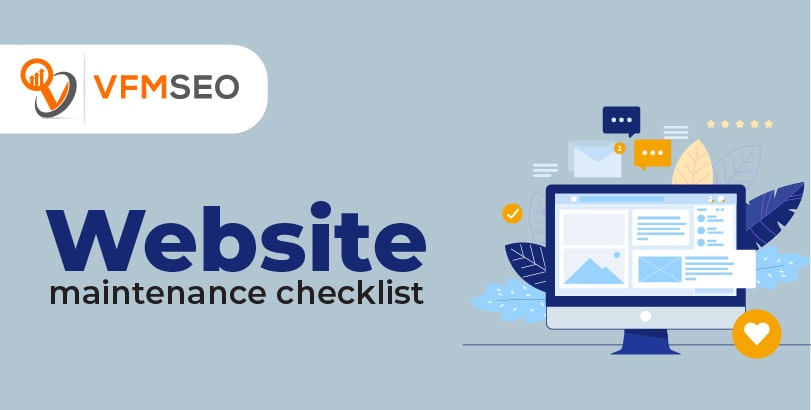
SEO Based Website Audit Checklist for 2021
This little website audit checklist will get you right to the topic itself. Why audit your website? Well, checking its health does not require any reasoning behind it. Don’t be deceived by Google: the website audit is not only concerning SEO. It is about design and UX, the lead generation method on your website, ease of administering the website, website content, and interaction with social media.
You’ll notice what functional areas you can and should increase and learn how to audit your website. A content editor writes this article for content editors, website admins, and website owners who require to explain to their tech colleagues what’s wrong with their website.
Website Audit Checklist for 2021
Design and UX audit
Your website design greets your users and makes them either escape or stay and do what they came for on your website. A few years ago (human basic subjective features have barely changed since then), Google held research, and it was revealed that it takes less than a second to judge a website’s attractiveness. Those research participants labeled more complex websites as less engaging. What does it all have to deal with fit functioning?
The thing is, a brain favors thinking of stuff that is easier to comprehend. Forget about complex designs not helping a website’s visitor then or lose a newcomer.
Web design and UX audit checklist
Use this checklist to create your design audit template.
- A page structure is simple to distinguish: headers, titles (H1-H6), footers, content help a user navigate a page.
- If suitable, consider using design breadcrumbs and footer links. Use heat maps to see if your website’s visitors hit the footer’s links first. Check an SEO part of this article to understand what dangers you might face.
- Content density does not repulse a visitor: it’s separated by headings, pictures (that must help understand content), white space.
- Design leads the visitor to CTA links and keys: interactive elements, hovers, etc.
- CTA is located within the first ? of a user’s screen.
- Web design aligns with the company’s brand.
- The website renders well on all devices: users can simply do what they came for on desktops, mobiles, tablets, and so on.
- Check all visible elements of your design: background models share the same style for the sake of a smooth transition between pages; all design elements (logo, favicons, headers, typography, colors used) don’t contradict each other too.

Content audit
Let’s consider a page structure is wisely designed, and users understand what actions they ought to perform to get what they came for. A menu does navigation work well, and all that is left – not to offend the users with content issues. They do read it; they do!
Content audit checklist
- The content adheres to the page object: if it is a contact page – content must adhere to how the user can contact you. It’s an undeniable yet widespread mistake. Put the page goal in mind when filling it with content.
- Content is logically structured and doesn’t confuse users. Use Jakob Nielsen’s Inverted Pyramid: put the most significant info first, then proceed with supporting details, and only after all add related information.
- No spelling and grammar mistakes.
- No extra content: only that drives a visitor to CTA.
- Likewise, design in general, you should pay consideration to content structure and how it’s divided: blocks, bullets, buy soma online legally white space, and illustrative pictures.

SEO audit
A search engine optimization part executes your content visible to a broader audience. Without specific terms, you can do many technical operations so that more and more people find your content. Some changes, like editing headings and the content itself, entering links can be implemented without the programmer’s supervision; others require the help of a specialist.
SEO audit checklist
- Set up a correct tracking tool to trace what’s going on with your website: keywords, traffic, entrance pages, exit pages, etc.
- Put suitable content tags: title tags, description tags, image tags, Meta tags.
- Utilize keywords and their synonyms in the headings, in the text itself.
- Eliminate broken links on your website.
- Make sure your content doesn’t have references to other sources at the very opening: this way, readers won’t leave your website too soon for Google Analytics or other tools to count it as a bounce and reduce a website’s ranking in search.
- Consider using internal links on your website: in the footer, in content. Don’t party hard there. Such internal links must help users to maintain their journey. If those links are entered automatically, with the help of a bot, for example, Google can punish you: it treats links jamming into every matching word as a manipulation. You can get the results of such cross-linking at the end of the article.
- You’ve given enough attention to link building, and other websites refer to yours. Thus, Google uses your website as an authority one and ranks it higher. Of course, if websites that refer to your website are reliable.
- Tune the server files that affect how search engines access your website and index it: .htaccess, robots.txt, sitemap.xml. This step can be rather difficult for setting up without the programmer’s supervision, but try not to omit it. Google must crawl into and examine your content correctly!
What SEO gives you?
- First of all, you know what drives your traffic and what your traffic sources are. Then you impact them!
- You learn how users find content similar to yours, and now organic traffic grows because you use tags, keywords wisely.
- A level of bounce rate decreases.
- A visitor gives more time on your website than before due to internal linking.
- After all, your ranking must be higher than before an SEO tuning.
Handle this small SEO analysis report to your web developer if you’re not sure you can perform it on your own.

Website maintenance checklist
Website speed and performance are essential to users. Does your site load in about 15-30 seconds? All researchers acknowledge that the optimal load time is from 1.5 to 3 seconds. People don’t wait, and you will lose not only users but also likely customers. Google Search Engine considers website speed in their search rating, so we would like you to use the website optimization into account. Every millisecond counts.
Here are just a few primary and general suggestions for improving website performance.
- Check the loading speed of the website.
- Check the loading speed of the images.
- Check or enable the data caching.
- Check the relevance of the codebase.
- Check the PHP version.
- Track errors through Google Analytics.
- Check Google PageSpeed optimization.
- Check the site’s functionality with the client’s help (as frequently as the website is updated).

